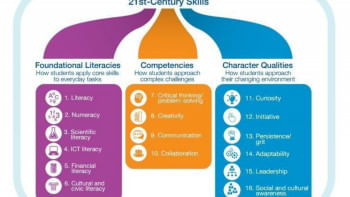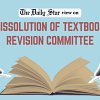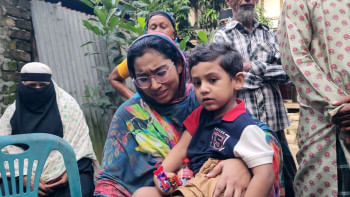Impact of the fourth industrial revolution on classroom education

Every industrial revolution created a system of education and learning method that addressed its needs. Looking back over time, the first evidence of human work was the creation of the agrarian society, characterised by human muscle power, domestic animals and water, and writing as a means of communication. Children from wealthy families went to school – mostly for religious education. The majority of the population was poor and had no education.
From the beginning of the industrial revolution, more people started going to school because there was a need for more people with technical and manageable skills. The real expansion of education for all classes of people took place during the second industrial revolution (2IR) when school education was an important part of life. During the period of the first industrial revolution (1775-1900), human and animal labour technology transformed into machinery, such as the steam engine, textiles, metallurgy, puddling and rolling processes for making iron, etc. In schools, class sizes were small (20-30 students), and teachers used a blackboard.
Exams were invented by an American businessman and philanthropist, Henry Fischel, sometime in the late 19th century. The 2IR (1901-1960) was represented by innovations in communication, transport, manufacturing, etc. A large number of people were going to higher learning institutions. Institutions of higher education during the period of the 2IR were co-educational and helped foster an increased role for women in industrial and academic settings. The size of the classes in schools increased (s30-40 students) and teachers used blackboards as well as whiteboards. The third industrial revolution (3IR), from 1961 to 2000, led to computerisation, digitisation, and web-based interconnectivity. Class size was large (30-100 students), and teachers used overhead transparencies and the internet in addition to blackboards and whiteboards. However, all the revolutions are characterised by centuries of experience with memorisation, based on teacher and student interaction via dictation; it was a one-way process, with students largely the consumers of information.
The fourth industrial revolution (4IR) is characterised by the fusion of the digital, biological, and physical worlds, as well as the growing utilisation of new technologies such as artificial intelligence, cloud computing, robotics, 3D printing, and the Internet of Things. A recent survey has suggested that the most valuable skills in the future will be those that machines cannot yet easily replicate, like creativity, critical thinking, emotional intelligence, adaptability, and collaboration. On the other hand, almost every field has benefited from advances in artificial intelligence. However, this has not yet been included in the education system. Therefore, there is a need to reinvent education in 4IR. Since artificial intelligence is gaining more importance, future jobs will involve the ability to work with it, so only subject-specific knowledge will not enough. Future graduates need to be intimately familiar with coding and technologies such as AI, robotics, and advanced analytics. Graduates must also learn soft skills in order to survive and thrive in the 4IR economy, which is characterised by constant change and disruption.
From the middle of the period of the 3IR, it has brought teachers to an environment where access to information is free, and immediate, where the focus is on active learning, which attaches great importance to collaboration between different teams (Maur, 2009). Many of the responses for reform in science and engineering education have led to a greater emphasis on the arts and interpersonal skills integrated into an interdisciplinary curriculum. Education researchers at the onset of 4IR have been trying to give more emphasis to the learning paradigm instead of the traditional instruction paradigm.
Knowledge is primarily imparted through lectures in the current teacher-centric instruction paradigm, and students are supposed to learn just by listening to them. This passive role of the student in the learning process favours memorisation rather than the internalisation of the material and is hence ineffective. If we understand how the brain processes information, we can see how inadequate the lecture-based instruction paradigm is. Sensory memory, working memory (short-term memory), and long-term memory are the three main functions of the Information Processing Model. Working memory is responsible for a mechanism that temporarily stores information when it is triggered by sensory memory. The time limit for short-term memory is usually 10 seconds to a minute. It also includes a time limit for the process; it cannot process more than seven pieces of information at one time.
Information in short-term memory is also short-lived, disappearing after 10-60 seconds if it is not rehearsed. This short-term memory limit for holding information affects the amount of information working memory has access to for processing. When working memory receives a lot of information, it becomes overloaded and can process a portion of the whole information into long-term memory. This is one reason why educators are questioning the effectiveness of the lecture-based instruction paradigm.
The learning paradigm was offered as a solution by Barr and Tagg in 1995. The learning paradigm is based on the idea that to learn effectively, the learners must construct and reconstruct knowledge themselves. Research finds that it is impossible to teach if a student does not want to or is not able to do so themselves.
Teachers play the role of a facilitator in this case. Only a portion of class time is spent on lectures and the rest of the time teachers work to create an interactive learning environment by allocating time for group discussions and Q&A sessions. Active participation of students in the learning process is the answer to effective learning. Encouraging group study, assigning real-life projects, and challenging problems are some of the means to ensure active participation.
Bangladesh cannot ignore the changes brought about by the fourth industrial revolution in order to achieve economic progress in this age of globalisation. Universities must take responsibility for making necessary modifications in curriculum and teaching and learning in order to produce graduates who are capable of working with the 4IR. Based on the modifications in education, teachers should have four competencies: Pedagogical competency, professional competency, social competency, and personality competency.
MM Shahidul Hassan is the Vice Chancellor of East West University. Email: [email protected]

 For all latest news, follow The Daily Star's Google News channel.
For all latest news, follow The Daily Star's Google News channel. 









Comments